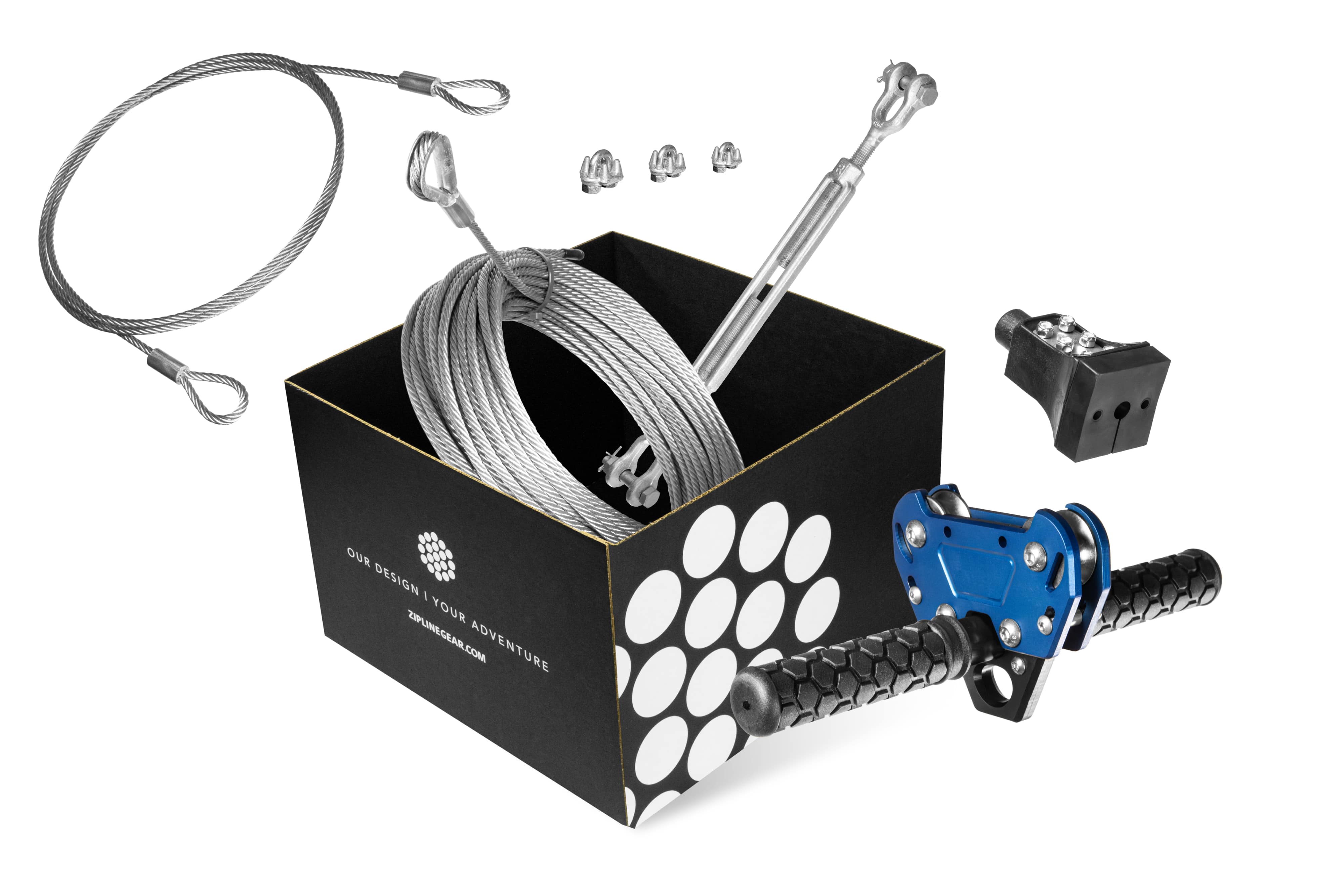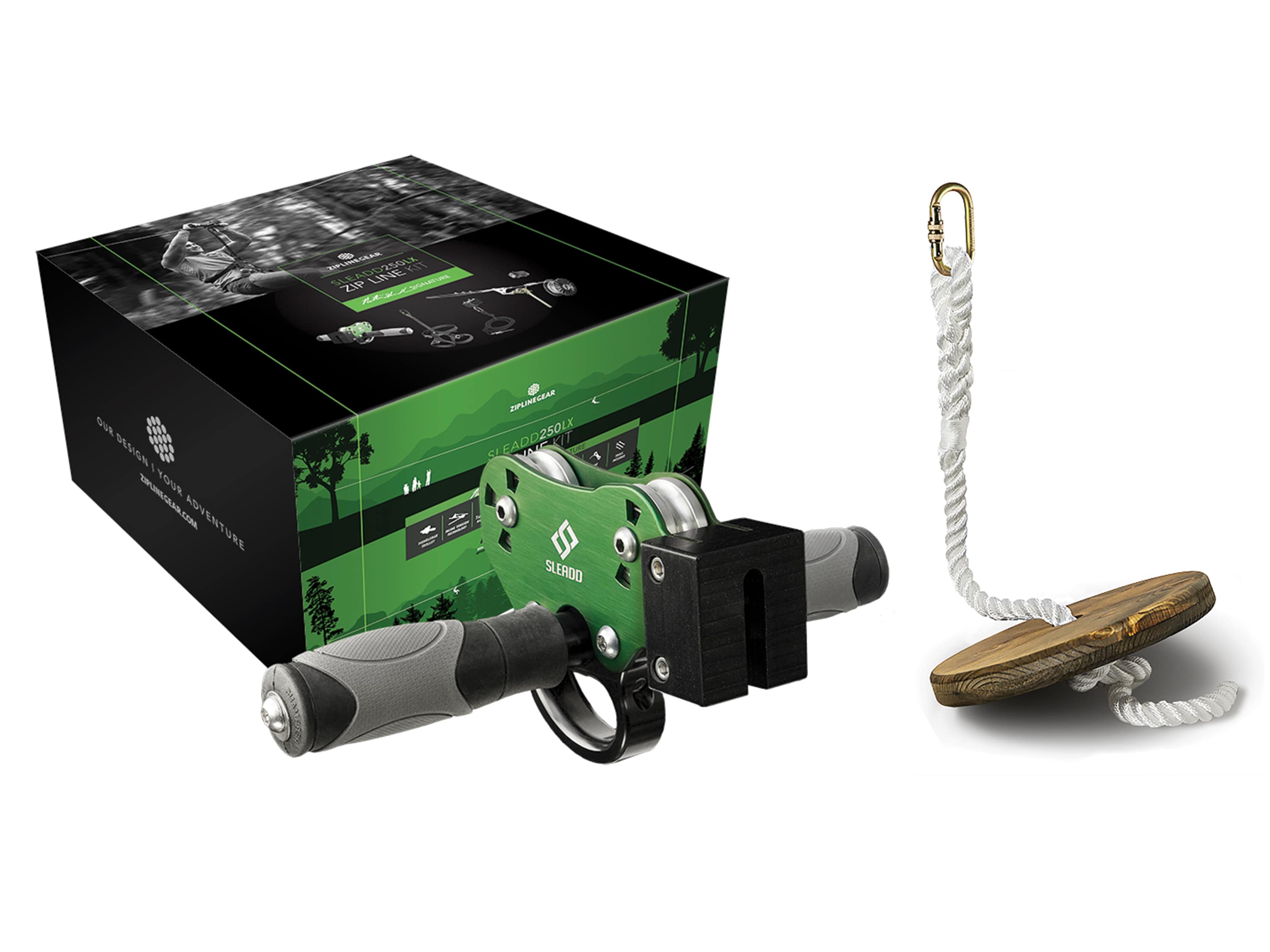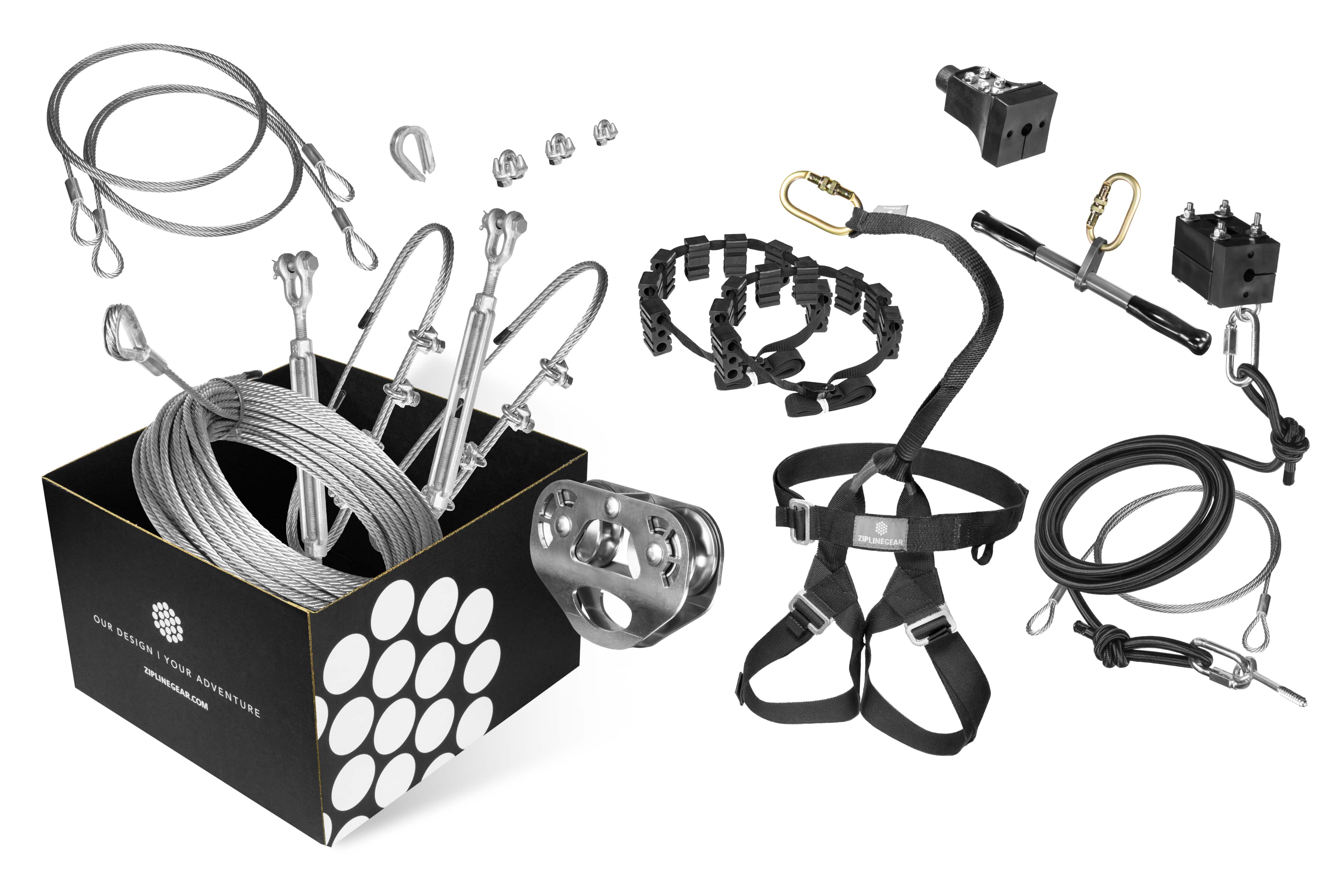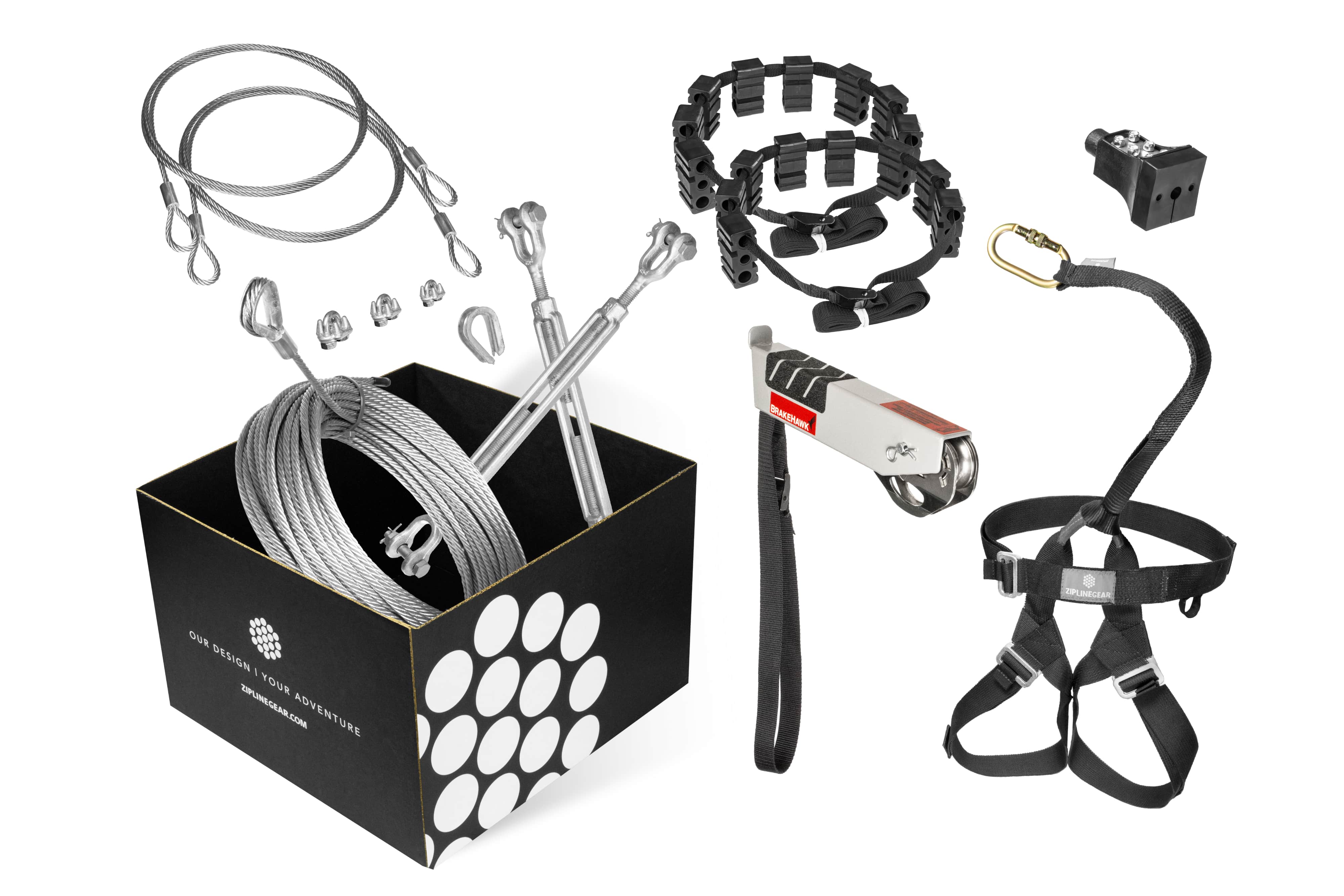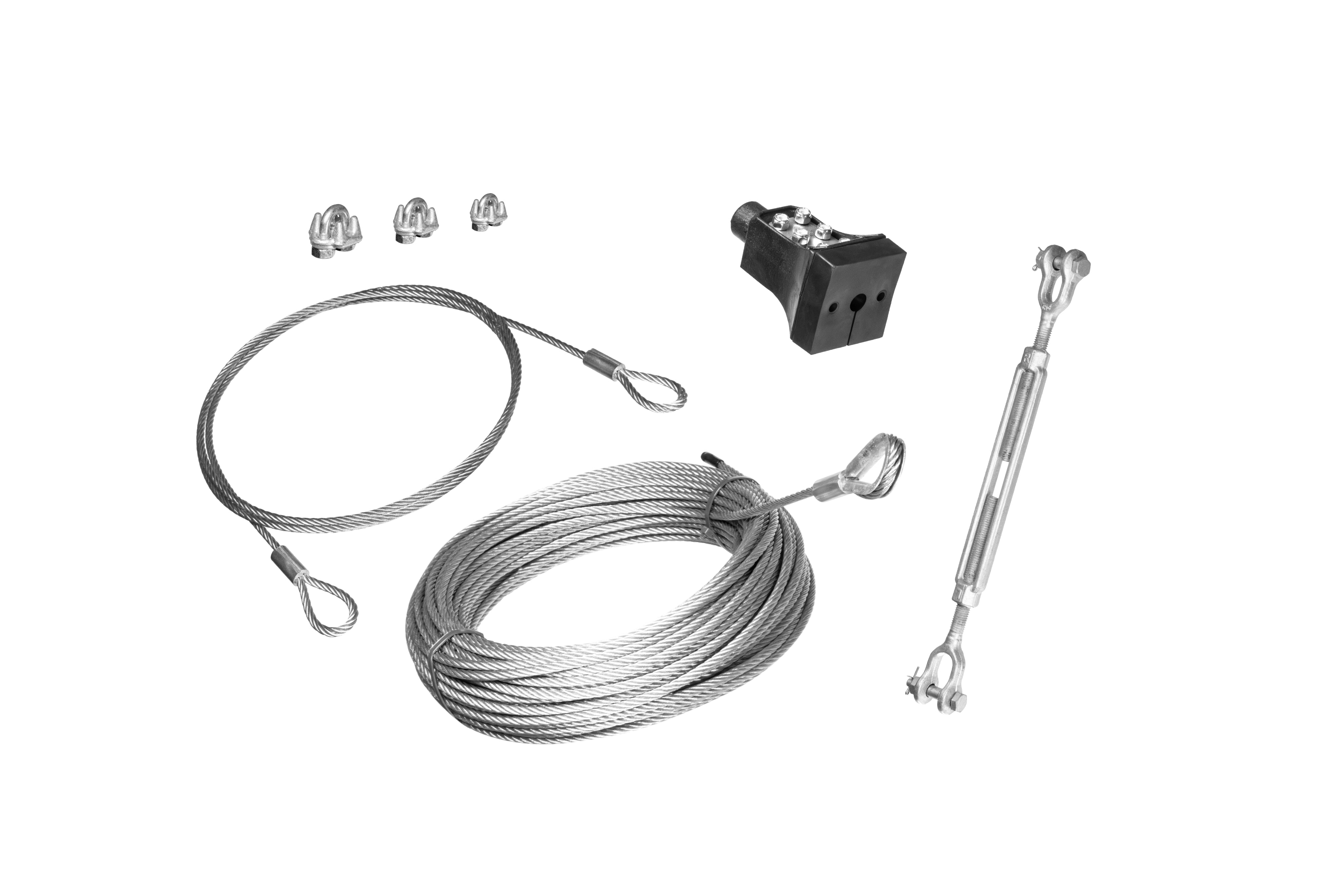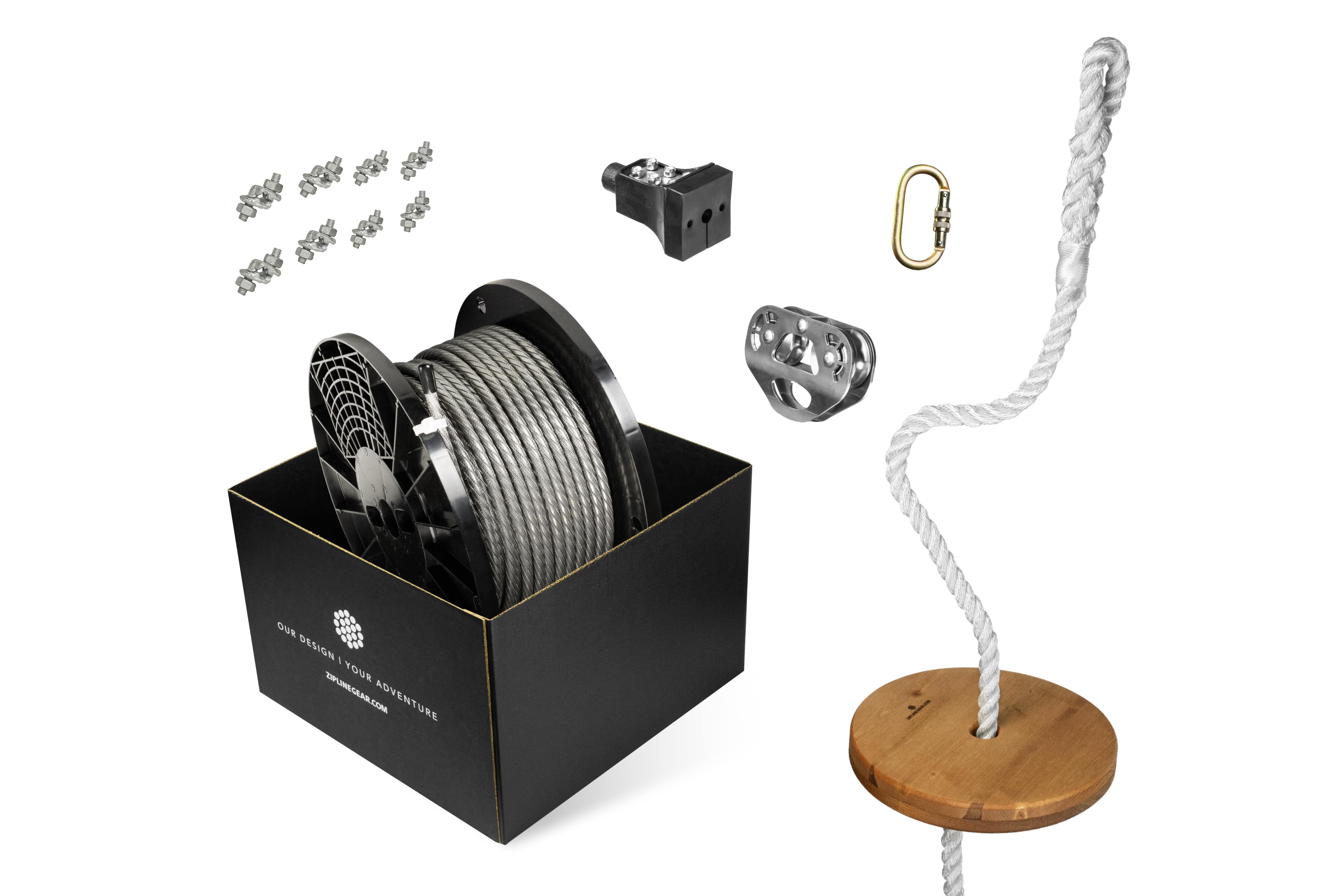How to Take Down a Zip Line
Zip lines may need to be taken down for a number of reasons, when they are no longer usable, need to be moved to a different location, or require reconfiguration. Follow these steps to safely dismantle your zip line:
Step 1: Remove Riding Gear
Begin by removing any riding gear from the zip line. This includes trolleys, harnesses, and any other accessories attached to the cable.
Step 2: Prepare a Tensioning Device
Next, set up a tensioning device (typically a come-along outfitted with a cable grab) to pull the zip line cable towards one end. Make sure the tensioning device is securely attached to the ending anchor, and is near the upper limit of its pulling range. You will only need a small amount of take-up to relieve tension from the zip line anchor hardware, before feeding it out backwards to lower the zip line.
Step 3: Release Tension from the Anchor
Using the tensioning device, pull the zip line cable towards one end. Once the ending anchor is relieved of tension, detach or disassemble the connecting hardware from the anchor. This may involve removing nuts, clips, or other fasteners. Carefully collect all parts and keep them organized for future use or disposal.
Step 4: Lower the Zip Line Cable
With the hardware detached and the zip line disconnected from the anchor, slowly back out the tensioning device. The come-alongs we carry at ZipLineGear have an internal clutch to allow a controlled reversal of the drum, if you are using a come-along or ratchet without this feature, you will need to manually alternate the release of the ratchet cams (essentially operating it in reverse) in order to safely release tension. This will allow the zip line cable to drop gently to the ground. Ensure that the area below the cable is clear to prevent any damage or injury.
Step 5: Disconnect the Second Anchor
After the cable is on the ground, move to the second anchor and disconnect it in the same manner, removing all connecting hardware.
With both anchors disconnected and the cable on the ground, you can now coil up and store the zip line. Inspect all components for wear or damage, and determine which parts can be reused or may need replacement.
- Choosing a selection results in a full page refresh.
